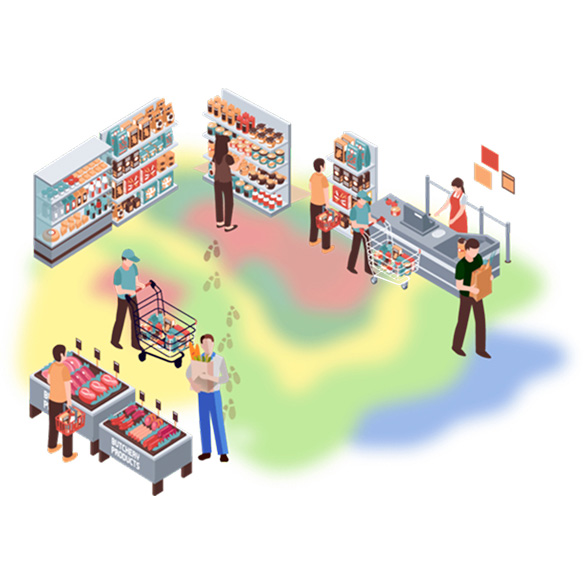
Putting products on the map through virtual indoor positioning
RPS approached us with an exciting challenge: create a white-label app that fuses the best of online and in-store shopping. Their goal was to give retailers a powerful tool to guide customers directly to products and resources within a seamless in-person experience. Think Google Maps meets Amazon’s product information but tailored to the brick-and-mortar world. We were tasked with bringing this bold vision to life, enhancing the shopping journey with innovation and ease.
Outcomes
Seamless Shopping Experience
We developed an intuitive, easy-to-use app that connects the digital and physical shopping worlds. Users can find products across multiple retailers, save items, and even map out their trips to the store, creating a more efficient, enjoyable shopping journey.
Precise Navigation
We implemented a powerful navigation system using real-world floor plans and location algorithms to guide users to products with pinpoint accuracy. This technology ensures users can navigate large spaces easily, with personalized routes that adjust for accessibility needs.
Scalable Design
RPS has a flexible design system that allows it to scale and evolve the app as its needs change. This system ensures consistency across the user interface while allowing for fast iterations, supporting long-term growth without compromising quality.
Shopping, Simplified.
RPS’s app elevates the shopping experience by enabling users to find and save products across various retailers easily. With a global search engine pulling real-time product data, users can quickly see which stores have their desired items in stock, making their shopping trips more efficient. Beyond product searches, the app lets users create shopping lists, map their store trips, and even track subtotals to ensure they stay on budget. It's all about streamlining the in-store experience and saving time.


A Brand That Builds Trust
Trust and ease were at the core of RPS’s app, and we helped translate that vision into the brand’s design. The RPS team wanted a clean, efficient user experience that inspired confidence, so we reimagined their branding with a more straightforward, refined approach. Using a monochrome color palette with bold accent colors, we created a visual identity that draws attention to key actions and guides users through the app. Every detail is designed to keep users focused on what matters most — getting them in and out of stores with ease.






Designed for Growth
Scalability was key, so we built a design system that could grow with RPS’s app. Establishing a solid visual design language ensured consistency across the user interface while enabling rapid iterations. This approach allowed the team to move quickly through design changes, providing RPS with a flexible, future-proof solution that can adapt as the app expands and evolves.


Technology that Enhances the Experience
At the heart of the RPS app is innovative technology that transforms the shopping experience. By creating 3D models from actual store floor plans, users can explore each location in detail before even stepping inside. The app offers precise navigation thanks to location-based algorithms that work even when GPS isn’t available. The app intelligently adjusts routes to avoid stairs for those with mobility challenges, ensuring accessibility. It even assists the visually impaired by alerting them to objects in their path, creating a truly inclusive experience.

Augmented Reality for Seamless Navigation
The RPS app harnesses the power of augmented reality, beacon technology, and wayfinding to provide users with precise, turn-by-turn directions inside multi-level stores. Using a beacon-agnostic platform ensures compatibility with any beacon setup, making navigation smooth and adaptable. Whether users are searching for specific products or simply exploring the store, the app leads them directly to their destination, making shopping easier and more intuitive than ever.

Data-Driven Insights for Retail Success
Understanding customer behavior is crucial, and the RPS app gives retailers the tools to do just that. By integrating advanced analytics, the app tracks what users are searching for, where they are in the store, and which products they interact with most. Heat maps of high-traffic areas provide real-time insights, allowing retailers to optimize product placement and enhance the customer experience. It’s a powerful tool for staying ahead of trends and meeting customer needs.
Bringing Augmented reality to Life
When it comes to transforming how people interact with physical spaces, augmented reality is a game-changer. We’ve worked with RPS to create a platform that uses AR, beacon technology, and wayfinding to guide users seamlessly through complex environments. This isn’t just for retail — it’s a powerful tool for any industry looking to enhance customer engagement, improve navigation, and create immersive, real-time experiences. Whether it’s a museum, hospital, or office space, we can bring AR to life in any context.



